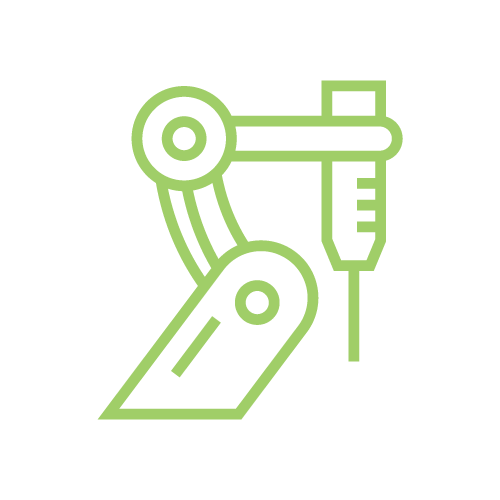
Hernia Surgery
A hernia occurs when a body organ is pushed through a tear in the tissue or muscle that holds that organ in place. Hernias are a common condition in people of all ages.
Types of Hernias
Causes and Risk Factors
Muscle weakness and muscle strain are the two major factors contributing to hernias. Hernias may occur over a long period of time or suddenly. There are many causes of hernias due to muscle weakness, including:
- Straining on the toilet with constipation
- Carrying heavy loads
- Pushing heavy loads
- Persistent or chronic coughs
- Injury
- Surgery
- Pregnancy
- Fluid retention in the abdomen
- Sudden weight gain
- Sneezing
Other risk factors include a hereditary link, an undescended testicle, obesity, smoking and chronic conditions like cystic fibrosis that involve a persistent, heavy cough.
Symptoms
A bulge or lump is the most common symptom of a hernia. The hernia is more palpable and visible when standing up, bending down or coughing. Hernias do not always cause pain and usually are described as more of a discomfort. Pressure or a heavy feeling in the abdomen are usually present, as well as burning or aching where the bulge is located. Symptoms of a hiatal hernia include GERD, chest pain and difficulty swallowing.
Some hernias are asymptomatic (no symptoms) and may not be discovered until a medical exam is performed for an unrelated condition.
Potential complications
Complications of an untreated hernia can include:
- Intense pain
- Swollen and red skin over the hernia
- Restricted blood flow to the area, causing gray or blue skin tone
- Irreducible or incarcerated hernia (the bulge cannot be pushed back in) causing loss of blood supply to the intestinal tissue (also called strangulation)
- Tissue death (necrosis)
- Nausea and vomiting
- Gangrene
Diagnosis
Diagnosis includes a physical exam and patient history. Many hernias are visible and palpable upon exam. In some cases, other diagnostic tests may be ordered such as ultrasound, computerized tomography (CT) scan, urinalysis, blood tests, and an electrocardiogram (ECG) to determine heart problems that would be a risk factor for surgery.
Misdiagnosis
Because most hernias are diagnosed based on a visual and physical examination, a misdiagnosis is possible. Even with an ultrasound, misdiagnoses can still occur. In questionable cases, a CT scan can assist in properly diagnosing a hernia. Hernias may also be misdiagnosed in women due to their higher prevalence in men. Also, hernias in women may be hidden internally, causing chronic intense groin or abdominal pain, which may be misdiagnosed as a different medical condition.
Treatment
At Advanced Laparoscopic Associates, we perform the following surgical procedures to treat hepatobiliary conditions:
Recovery from Surgery
In most cases, patients can go home the same day after surgery. Complications or more complex repairs may require an overnight hospital stay and extend hernia surgery recovery time. Surgeons may use local or general anesthesia, depending on the type of surgery.
Drinking plenty of water is necessary for proper healing and avoiding constipation. Straining during a bowel movement should be avoided. Fiber or over-the-counter medications such as stool softeners can be added to the diet to help with constipation.
Postoperative urinary retention (PUR) is a post-surgical risk factor. Difficulty urinating after hernia surgery occurs in up to 22 percent of patients. Advanced age, history of benign prostatic hyperplasia (BPH, enlarged prostate) in men and bilateral repair are associated with PUR after inguinal hernia surgery.
Fatigue is common after surgery. Driving and drinking alcohol should be avoided for a couple of days, and will vary depending on your specific case. Lifting more than 10 pounds is prohibited for 4-6 weeks. Normal activity should be increased slowly, but walking every hour is encouraged to prevent blood clot formation.
Most people may return to work within two to three days if they feel able; however, the weight lifting restriction will still be in place and no strenuous activity should be performed. For more complex or recurrent hernia repairs, the lifting limit may be extended. Minimally invasive hernia repair recovery time may be shorter than open hernia surgery.
Scar healing occurs about four to six weeks after surgery and will continue to fade. Tight or rough clothing may irritate the incision site and should be avoided. Wound care instructions will be given to take home.
Hernia recurrence
Mesh reduces the risk of a hernia recurrence. Obesity and wound complications increase the risk of recurrence, as do smoking and diabetes.
Call (201) 646-1121 today and schedule your consultation with one of our surgeons!
Or use our online Request an Appointment form.



